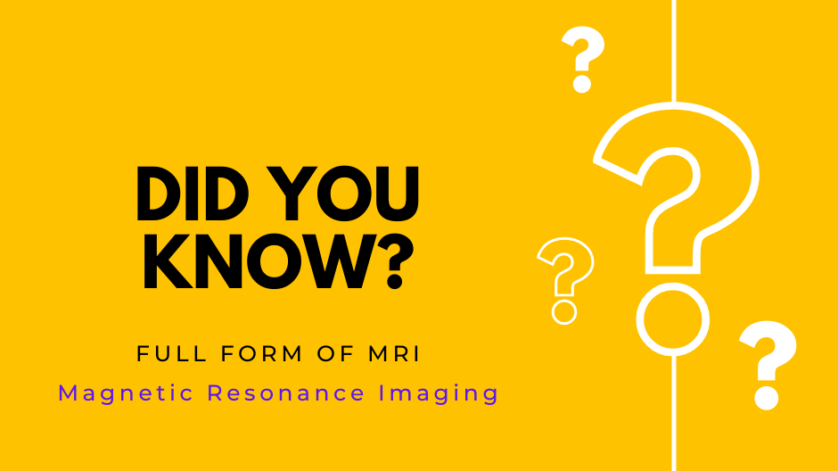MRI Full Form
Magnetic Resonance Imaging, commonly known as MRI, is a non-invasive diagnostic imaging technique that uses a magnetic field, radio waves, and computer technology to create detailed images of the body’s internal organs and structures. This imaging technique has revolutionized the field of medicine, allowing doctors to diagnose and treat various medical conditions effectively.
The MRI machine is a large, cylindrical-shaped machine that has a strong magnetic field. The patient lies on a table that slides into the machine, and the machine creates a series of images that show the body’s internal structures from various angles. The MRI machine uses radio waves to excite the hydrogen atoms in the body’s tissues, and the machine detects the signals emitted by these atoms to create an image.
MRI is used in many medical specialties, including neurology, orthopedics, cardiology, and oncology. Neurologists use MRI to diagnose conditions such as multiple sclerosis, Alzheimer’s disease, and brain tumors. Orthopedists use MRI to diagnose conditions such as torn ligaments, herniated discs, and joint problems. Cardiologists use MRI to diagnose conditions such as heart disease and heart defects. Oncologists use MRI to diagnose and monitor tumors.
One of the benefits of MRI is that it is a non-invasive imaging technique. Unlike other imaging techniques, such as X-rays and CT scans, MRI does not use ionizing radiation, which can be harmful to the body. This makes MRI a safe imaging technique, especially for pregnant women and young children.
Another benefit of MRI is its ability to produce high-resolution images of the body’s internal structures. The images produced by MRI are very detailed, which allows doctors to make accurate diagnoses and treatment plans. MRI can also show structures that are not visible with other imaging techniques, such as soft tissues and organs.
However, MRI is not without its limitations. Patients with certain medical devices, such as pacemakers or cochlear implants, may not be able to undergo MRI. Additionally, patients with metal in their bodies, such as dental fillings or surgical implants, may experience discomfort or even injury during the MRI procedure.
MRI is a powerful diagnostic imaging technique that has revolutionized the field of medicine. Its ability to produce detailed images of the body’s internal structures has allowed doctors to make accurate diagnoses and treatment plans for a wide range of medical conditions. While there are some limitations to the use of MRI, it remains a safe and effective imaging technique that is widely used in medical practice today.

